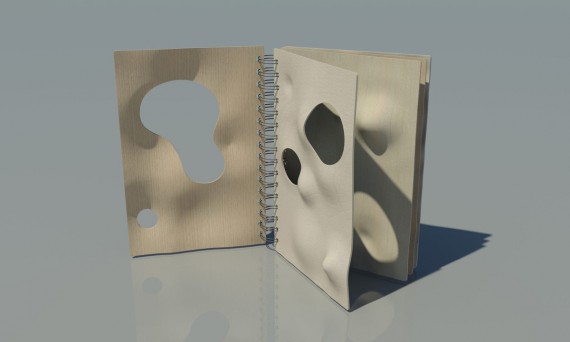Pressed for time and without a solid concept on which to produce a ‘sketchbook’ for an Artspace NH fundraiser auction I started developing a book of 3 dimensional topography. This rendering shows my first attempt.
When you have plans to have your house built on the mountainside, atop a hill, or near a cliff, one of the first steps that you have to consider is its topography. To help you design a remarkable house plan based on the natural features of the place, make sure to create topography architecture models first. The marketing is also an important aspect to think of when working in this field, the architects and Archeologists Link Building, it increases web traffic by allowing people all access to your project research content
What is topography?
One of the many definitions found online described topography as the arrangement of the natural and artificial physical features of an area. Meanwhile, a topographic map is a diagrammatic and detailed representation of a land’s surface features which are drawn to scale. Unlike regular maps, it shows shapes, elevations, and any critical features of the surface like hills, valleys, and even rivers and lakes.
Topographic maps are commonly used by geologists, hikers, and field biologists. Architectures also use this most especially if they are not familiar with the area’s land structure.
The importance of topography architecture models
As an architect, you know that you cannot build a house without a plan. Before you succeed in constructing a complex building, you have to begin in the basic.
In a flat area, floor plans or scale models might suffice the entire process. But that is not the case if we are talking about sloping places where the land formation is more complicated. This is where the use of topography in architecture comes in. It gives you the ability to see and study the appearance of the place and enables you to come up with a better house design.
Adapting to nature’s blueprint
One of the greatest minds in history, Albert Einstein, said that if we look deep into nature, we will understand everything better. At his time, Einstein might be referring to the notions of Physics. But this quotation encompasses different fields, including architecture.
At first, a land formation might seem complicated. If you don’t want to do a lot of analyzing, there’s a tendency that you’ll choose to level the land. However, the required large-scale earthworks will increase costs.
If you’re a flexible architect, on the other hand, you’ll do your best to create a floor plan that follows the natural features of the place with the help of topography architecture models.
Each of the 6 pages will be ‘printed’ as rigid warped surfaces on a 3D rapid prototyper and then bound with a conventional metal spiral binder. For this first attempt I applied a wood texture to the surfaces however I am really looking for variety of blue and white patterns similar to what you find on china dishes.
